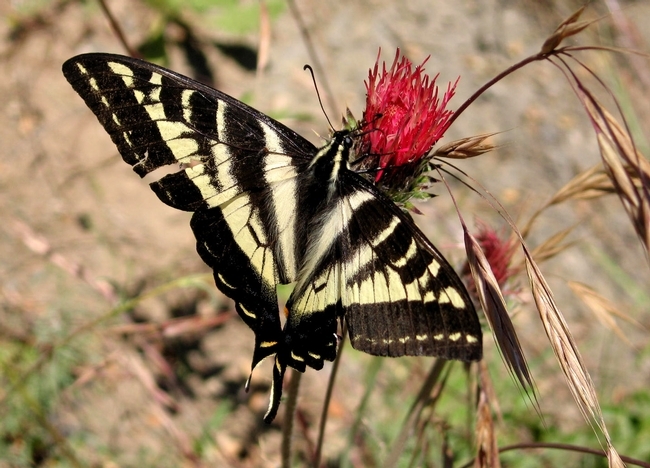Here are your clues: A helmet, a feather duster and a tape measure…
As a newly employed community educator at the Hopland Research and Extension Center, I believe the time is ripe to consider how our facility can provide the hands-on experience that all these programs require.
Many of these initiatives aim to represent the real world of scientific investigation and environmental issues relevant to their state. I am lucky enough to interact on a daily basis with researchers working at the sharp end of scientific discovery, in an environment chosen to represent one of California's key ecosystems. What better blend could there be to allow our local school and college students the chance to witness agriculture and natural resource management in it's complex and dynamic true state?
Of course collaboration and creating programs always takes time and effort! Projects like 4H, California Regional Environmental Education Community and Project Learning Tree make the process much more efficient. They have put together activities that can be easily taken off the shelf and used to appropriately represent the diversity of systems which can be seen through the Research and Extension Centers.
Recently, I hosted my first field trip at Hopland Research and Extension Center, which covers 5,300 acres of oak woodland and chaparral habitat. A busy group of third-graders tumbled from their vehicles clutching their tablets, phones and cameras ready to document their fieldtrip digitally at every stage. The first step to connect with nature, is of course to disconnect! Having packed away their media devices, it was time to figure out some mysteries… third grade provides a great opportunity to look at adaptation and luckily we could easily observe a species well equipped for its environment right on our doorstep!
As well as observing this particularly well-represented species, we worked on our own scientific questioning and asked, “In which habitat at HREC will we see the most species of birds?” Our volunteer bird expert Chuck Vaughn helped students identify and even showed them a great use for those stowed-away digital devices by identifying and playing bird calls from his phone as we observed and learned.
Creating the perfect program and meeting the needs of educators, students, standards, and curriculum resources might be a balancing act, but working with UC ANR at one of the REC's allows full immersion in a habitat where science can come to light. I hope to see one of those students return to the Hopland REC as a fully-fledged researcher in future years … and look forward to seeing the outcome!
Author: Hannah Bird


